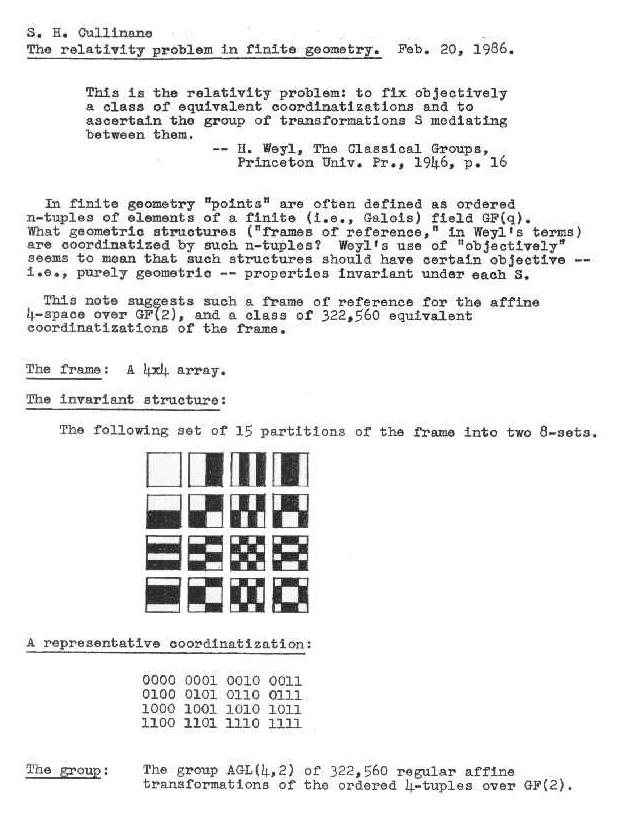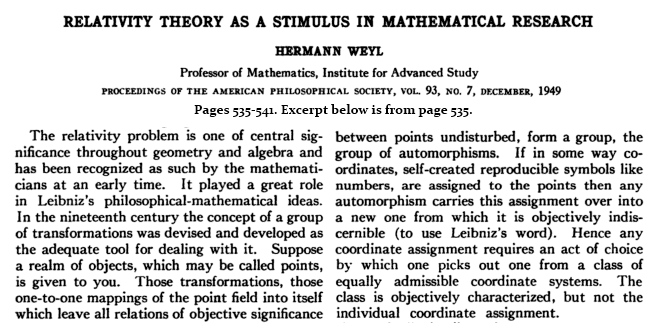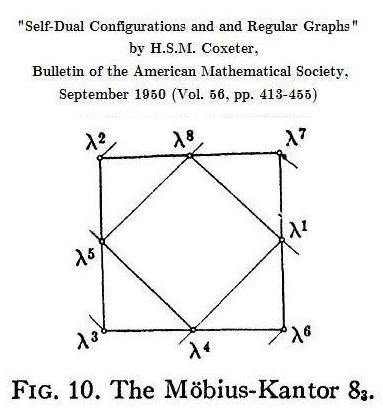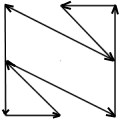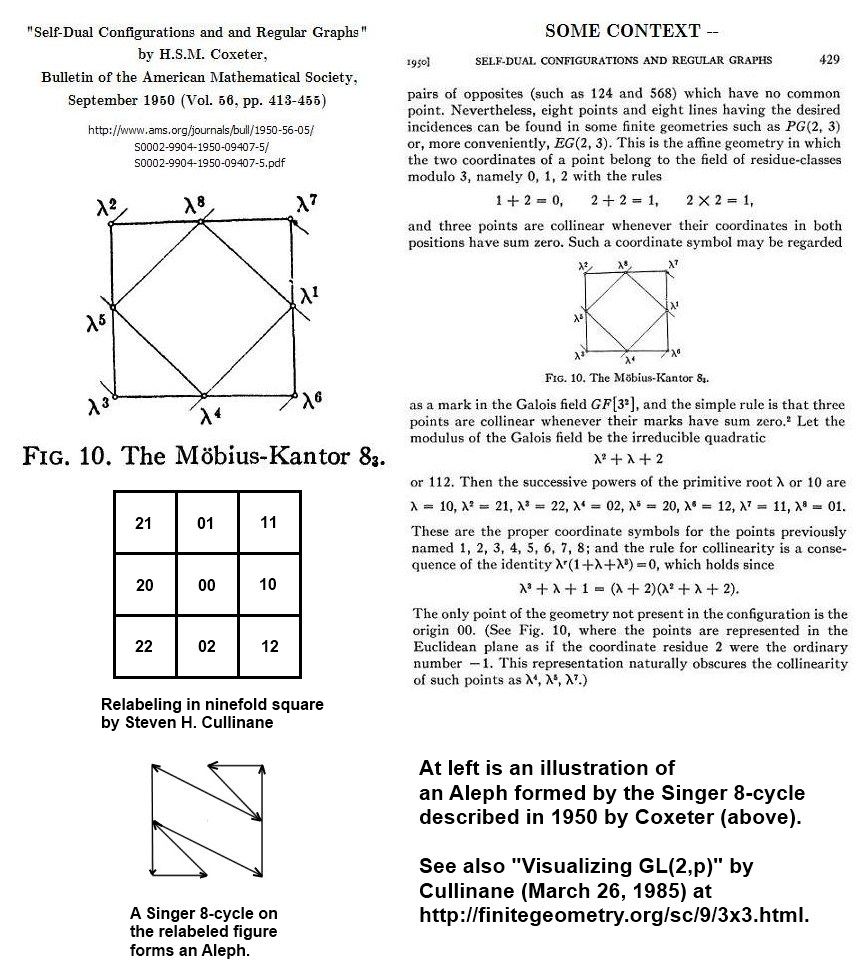"The relativity problem is one of central significance throughout geometry and algebra and has been recognized as such by the mathematicians at an early time."
– Hermann Weyl, 1949, "Relativity Theory as a Stimulus in Mathematical Research"
"This is the relativity problem: to fix objectively a class of equivalent coordinatizations and to ascertain the group of transformations S mediating between them."
– Hermann Weyl, 1946, The Classical Groups, Princeton University Press, p. 16
Twenty-four years ago a note of Feb. 20, 1986, supplied an example of such coordinatizations in finite geometry. In that note, the group of mediating transformations acted directly on coordinates within a 4×4 array. When the 4×4 array is embedded in a 4×6 array, a larger and more interesting group, M24 (containing the original group), acts on the larger array. There is no obvious solution to Weyl's relativity problem for M24. That is, there is no obvious way* to apply exactly 24 distinct transformable coordinate-sets (or symbol-strings) to the 24 array elements in such a way that the natural group of mediating transformations of the 24 symbol-strings is M24.
There is, however, an assignment of symbol-strings that yields a family of sets with automorphism group M24.
R.D. Carmichael in 1931 on his construction of the Steiner system S(5,8,24)–
"The linear fractional group modulo 23 of order 24•23•11 is often represented as a doubly transitive group of degree 24 on the symbols ∞, 0, 1, 2,…, 22. This transitive group contains a subgroup of order 8 each element of which transforms into itself the set ∞, 0, 1, 3, 12, 15, 21, 22 of eight elements, while the whole group transforms this set into 3•23•11 sets of eight each. This configuration of octuples has the remarkable property that any given set of five of the 24 symbols occurs in one and just one of these octuples. The largest permutation group Γ on the 24 symbols, each element of which leaves this configuration invariant, is a five-fold transitive group of degree 24 and order 24•23•22•21•20•48. This is the Mathieu group of degree 24."
– R. D. Carmichael, 1931, "Tactical Configurations of Rank Two," in American Journal of Mathematics, Vol. 53, No. 1 (Jan., 1931), pp. 217-240
